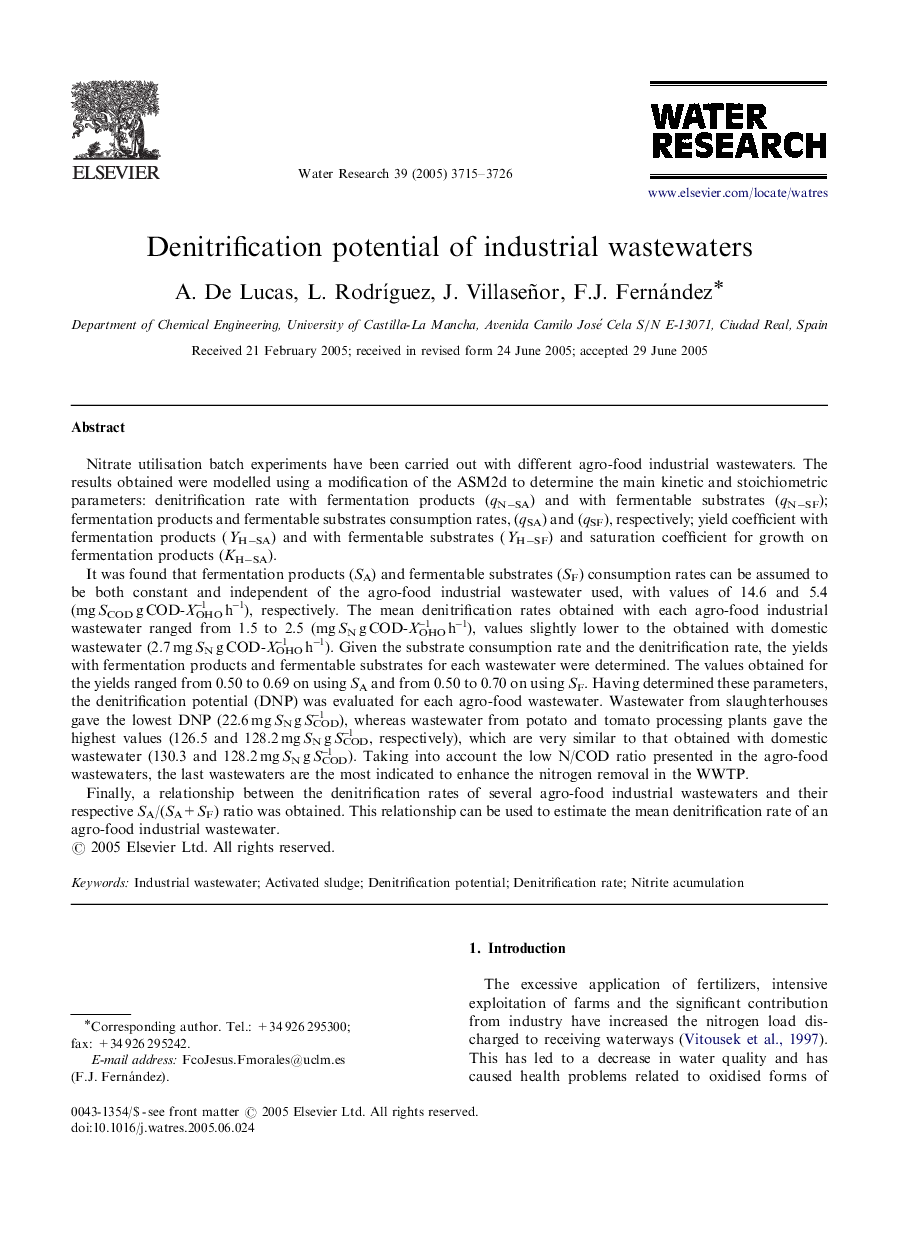| کد مقاله | کد نشریه | سال انتشار | مقاله انگلیسی | نسخه تمام متن |
|---|---|---|---|---|
| 4485195 | 1316943 | 2005 | 12 صفحه PDF | دانلود رایگان |

Nitrate utilisation batch experiments have been carried out with different agro-food industrial wastewaters. The results obtained were modelled using a modification of the ASM2d to determine the main kinetic and stoichiometric parameters: denitrification rate with fermentation products (qN−SA) and with fermentable substrates (qN−SF); fermentation products and fermentable substrates consumption rates, (qSA) and (qSF), respectively; yield coefficient with fermentation products (YH−SA) and with fermentable substrates (YH−SF) and saturation coefficient for growth on fermentation products (KH−SA).It was found that fermentation products (SA) and fermentable substrates (SF) consumption rates can be assumed to be both constant and independent of the agro-food industrial wastewater used, with values of 14.6 and 5.4 (mg SCOD g COD-XOHO–1 h–1), respectively. The mean denitrification rates obtained with each agro-food industrial wastewater ranged from 1.5 to 2.5 (mg SN g COD-XOHO–1 h–1), values slightly lower to the obtained with domestic wastewater (2.7 mg SN g COD-XOHO–1 h–1). Given the substrate consumption rate and the denitrification rate, the yields with fermentation products and fermentable substrates for each wastewater were determined. The values obtained for the yields ranged from 0.50 to 0.69 on using SA and from 0.50 to 0.70 on using SF. Having determined these parameters, the denitrification potential (DNP) was evaluated for each agro-food wastewater. Wastewater from slaughterhouses gave the lowest DNP (22.6 mg SN g SCOD–1), whereas wastewater from potato and tomato processing plants gave the highest values (126.5 and 128.2 mg SN g SCOD–1, respectively), which are very similar to that obtained with domestic wastewater (130.3 and 128.2 mg SN g SCOD–1). Taking into account the low N/COD ratio presented in the agro-food wastewaters, the last wastewaters are the most indicated to enhance the nitrogen removal in the WWTP.Finally, a relationship between the denitrification rates of several agro-food industrial wastewaters and their respective SA/(SA+SF) ratio was obtained. This relationship can be used to estimate the mean denitrification rate of an agro-food industrial wastewater.
Journal: Water Research - Volume 39, Issue 15, September 2005, Pages 3715–3726